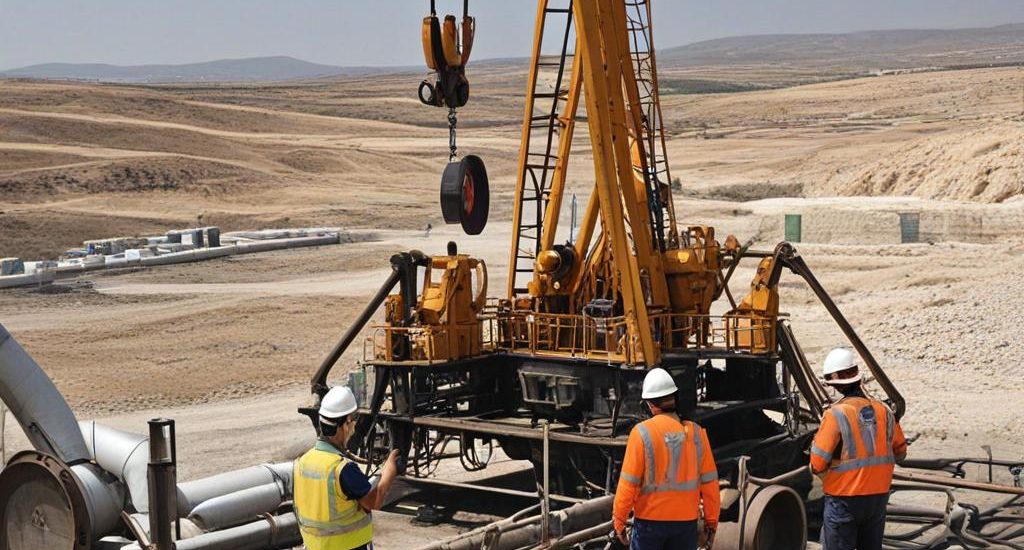Mitigate Risk & Optimize Efficiency with Strategic Risk Based Inspection (RBI) in Turkey
- June 7, 2024
- Posted by: Velosi Author
- Categories: Insights, Trainings

In Turkey, the oil & gas industry can contribute to major operational risks because of its infrastructure and complicated yet challenging geographical aspects. Performing Risk-Based Inspection (RBI) is critical for ensuring assets are safer and enhancing asset integrity.
Risk Based Inspection methodology visualizes which equipment is most likely to break and what would happen if it did. The methodology utilized this information to decide which equipment to inspect first. Moreover, this plan makes sure that important aspects are safe and follow the rules in Turkey to be safe. Consequently, by incorporating effective risk-based inspection strategies, the Turkish oil & gas companies can reduce asset downtime, prevent hazardous situations, and conduct cost-efficient operations.
Risk-Based Inspection Importance in Oil & Gas Industry
Risk Based Inspection works by measuring the pressure an equipment can handle or support before breaking & misfunctioning. In general, it prevents all major risk assessments and ensures the safety of petroleum projects.
In addition, the risk based inspection perspective assists in deciding which equipment to inspect first, improving how inspections are done, planning when to inspect the equipment, and proficiently using Reliability Centered Maintenance. This means operations are safer, with less chance of things going wrong, and not needing to stop as often. It also implies being cost-efficient mitigating the reoccurring of certain risks. Thus, visualize different risks and decide how to handle them. As a result, RBI’s major aim is to calculate:
- The Probability of Failure (POF): It is the likelihood that something will break or stop working within a certain period. This means checking every part of the equipment to see if it could get damaged.
- Result of failing: COF measures how parts breaking down can affect operations. These results are divided into three areas: effects on people’s health and safety, effects on the environment, and effects on businesses.
Velosi’s Approach
Risk Based Inspection (RBI) at Velosi uses systematic analytical processes that are in compliance with the various recommended guidelines such as API 580, 581, and 571. Those thoroughly evaluate possible risks of each asset, including operation settings, probability of failure, and the part of the risk that comes with failure. With this all-encompassing analysis, the competitive market of Turkey acquires a different picture of the integrity of its business assets, which results in the priority of inspections.
By implementing Velosi’s RBI methodology, Turkish businesses can contribute towards a multitude of benefits:
- Targeted Inspection Plans: According to Velosi’s RBI approach, redundancies such as non-essential inspections are avoided, and attention is provided to the riskiest assets consistently. Consequently, the optimized inspection strategy would mean, less time spent outside the working line and thus more efficiency.
- Enhanced Safety: That is why, with the help of Risk Based Inspection protocols, potential equipment failures are defined and prevented before they occur, and thus employees work in a safer environment.
- Cost-Effective Maintenance: As for Velosi’s RBI methodology the total maintenance spending is controlled and the focus is made on critical assets. This targeted approach leads to a general decrease in the maintenance costs, and at the same time, an increase in the life expectancy of the equipment.
- Improved Regulatory Compliance: Through RBI services, Velosi therefore helps clients in Turkey to meet required regulations thus saving them the distress of having to face compliance laws.
An Overview of Risk-Based Inspection
Risk based inspection (RBI) initially involves the process of gathering information about an organization’s machinery and equipment. This includes looking at assets with potential damage, how often things go wrong, and where problems are likely to happen. This data gathering can be divided into the following:
- Qualitative: This means using descriptions and judgments from inspectors to gather data.
- Quantitative: Using numbers and chance.
- Semi-Quantitative: It means using both descriptive and numerical data together.
Once all the information is gathered, our professional industrialists visualize hazardous risk factors. This methodology utilizes the chances of failing and the impact of failing, as previously mentioned. This identification assists us in proficiently figuring out which parts are most risky and need to be inspected and maintained regularly.
The risk is determined as follows:
POF x COF = Risk
The aim of risk based inspection (RBI) is to optimize the maintenance activities for those high-risk assets most likely to suffer critical failures and to save resources on lower-risk assets.
Benefits of Risk-Based Inspection
Being proactive and using a risk-based approach in inspections has many advantages compared to being reactive. These advantages include:
- Enhanced, proactive way of preventing and dealing with potential problems and dangers through careful examination and reduction of risks.
- You can save money by planning inspections to prevent unexpected shutdowns.
- It assists in optimizing work & reduces extra inspections that are not needed.
- Using inspection resources efficiently gives an easy summary of important asset conditions.
- Reduces errors & ensures better equipment performance and dependability.
- Detects what could go wrong when machines don’t work well.
- Plans relevant maintenance activities to avoid delays and shutdowns.
- Makes sure that equipment follows safety and environmental rules.
- Regularly checking on equipment helps prevent technical problems.
Conclusion
Velosi’s Risk Based Inspection (RBI) services are valuable for many organizations in Turkey which assists them to gain competitive advantages, take safety measures, and provide justified profit within production during the long term. Hence, Turkish companies can gain a competitive edge and lead the ever-evolving industrial landscape with confidence.
Stay connected for more blogs!
Please contact us for more information and assistance.



